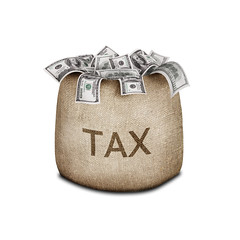 Tax (Photo credit: 401K)
Tax (Photo credit: 401K)This means that if you’ve been buying shares in a stock or mutual fund over the years and are considering selling part of your holdings, your tax liability could be significantly affected by the timing of your sale.
The main pitfall for most investors is the IRS “first-in, first-out” policy. Simply stated, this means the IRS assumes that the first shares you sell are the first shares you purchased. Thus, the first shares in become the first shares out. As a result, if the value of your shares has appreciated, more of the money you receive from the sale will be considered to be taxable as a capital gain.
Fortunately, there is an alternative. When you place a sell order, instruct your broker or mutual fund transfer agent to sell those shares that you purchased for the highest amount of money. This will reduce the percentage of the proceeds of the sale that can be considered capital gain and are therefore taxable.
In order for this strategy to work, you must specify exactly which shares you are selling and when they were originally purchased. Ask your broker to send you a transaction confirmation that identifies by purchase date the shares you want to trade. This will enable you to reduce your taxable gain and maximize your deductible losses when you fill out your tax return.
In some cases, you may be better off selling the first shares you purchased, even if this results in a larger gain. If the first shares are subject to the 15 percent long-term capital gains rate, but the recently purchased shares are subject to the higher short-term rate, the correct choice may not be obvious. Always consult a tax professional.
By carefully reviewing your brokerage statements, you can determine which shares you paid the most for. You can then specify exactly which shares you’d like to sell. A word to the wise: Make this request in writing. If the IRS calls the transaction into question, the burden of proof is on you.
Finally, the IRS also allows you to calculate your tax basis by taking the average cost of all your shares. On an appreciating asset, this should result in a lower tax liability than the first-in, first-out rule would dictate. Be aware, though, that if you elect to average, you must continue to average for any subsequent sales.
Using either system, you may end up with a lower tax liability from the sale of your shares than the IRS would assume using the first-in, first-out rule.
The value of stocks and mutual funds fluctuates so that shares, when sold, may be worth more or less than their original cost.
Mutual funds are sold by prospectus. Please consider the investment objectives, risks, charges, and expenses carefully before investing. The prospectus, which contains this and other information about the investment company, can be obtained from your financial professional. Be sure to read the prospectus carefully before deciding whether to invest.
The information in this article is not intended to be tax or legal advice, and it may not be relied on for the purpose of avoiding any federal tax penalties. You are encouraged to seek tax or legal advice from an independent Naperville Investment services advisor. The content is derived from sources believed to be accurate. Neither the information presented nor any opinion expressed constitutes a solicitation for the purchase or sale of any security. This material was written and prepared by Emerald. © 2012 Emerald Connect, Inc.
Related Articles:
Tax Season: Taxes on Your Investments
4 Steps to Tax Efficient Investing
Related Articles:
Tax Season: Taxes on Your Investments
4 Steps to Tax Efficient Investing


No comments:
Post a Comment
I welcome your comments here :)